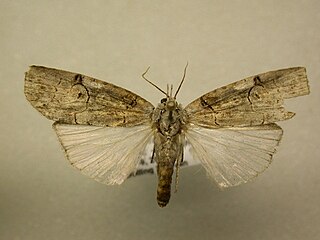
Amata is a genus of tiger moths in the family Erebidae. The genus was erected by Johan Christian Fabricius in 1807.

Cyanopepla is a genus of moths in the subfamily Arctiinae. The genus was erected by James Brackenridge Clemens in 1861.
Amata expandens is a species of moth of the family Erebidae first described by Francis Walker in 1862. It is found in Sundaland. The habitat consists of lowland areas.
Amata pactolina is a species of moth of the family Erebidae first described by Francis Walker in 1865. It is found in Australia.
Amata bicolor is a species of moth of the subfamily Arctiinae first described by Francis Walker in 1854. It is found in Queensland, Australia.
Amata decorata is a species of moth of the family Erebidae first described by Francis Walker in 1862. It is found on Borneo. The habitat consists of lowland areas.

Amata polymita, the tiger-striped clearwing moth, is a moth of the family Erebidae. The species was first described by Carl Linnaeus in 1768. It is found in China and Vietnam.

Iscadia is a genus of moths of the family Nolidae. The genus was erected by Francis Walker in 1857.
Amata velatipennis is a moth of the family Erebidae. It was described by Francis Walker in 1864. It is found in Ethiopia and Somalia.
Trichaeta tigrina is a moth in the subfamily Arctiinae. It was described by Francis Walker in 1865. It is found in Cambodia.



